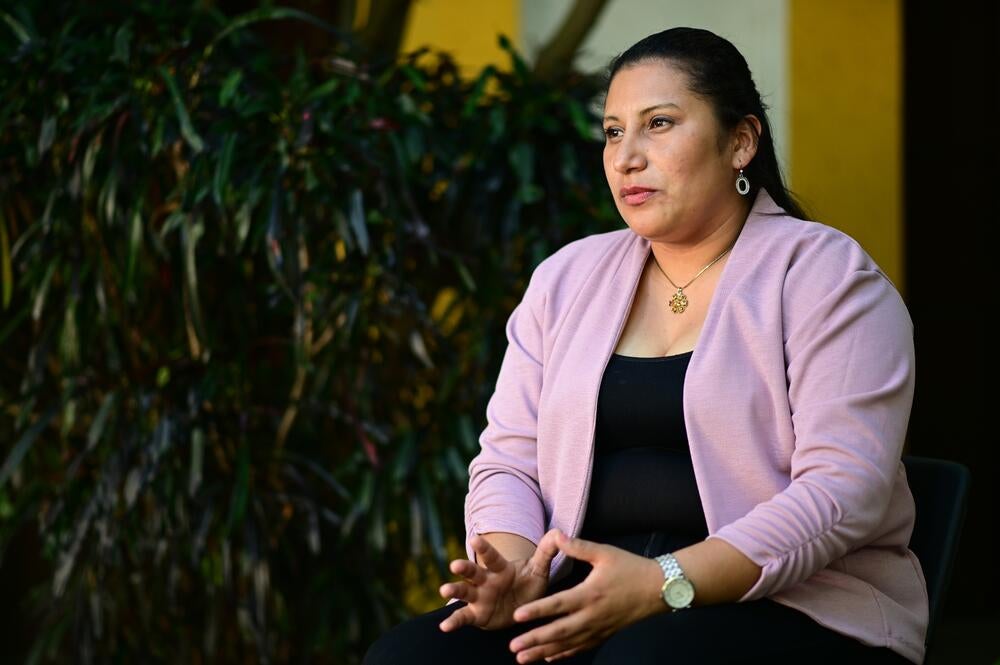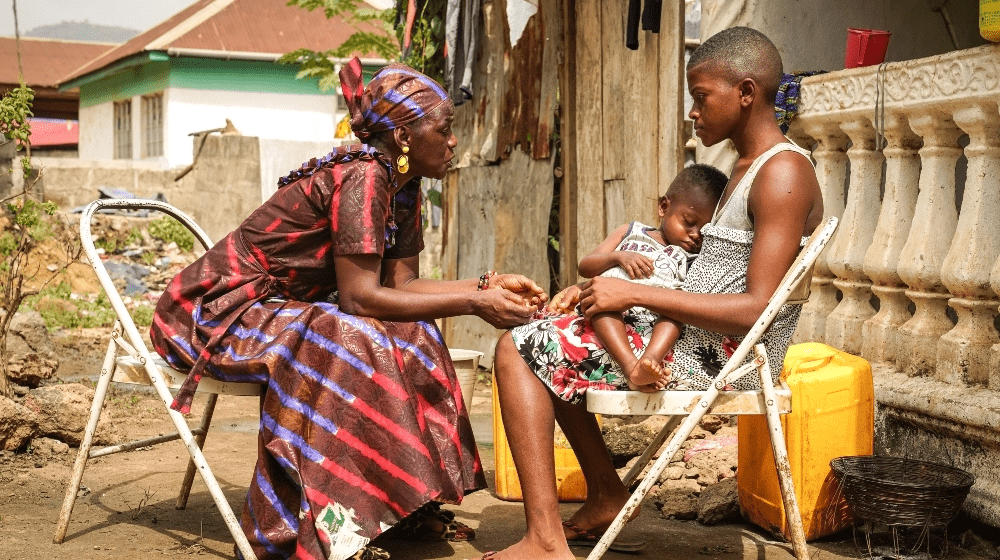UNITED NATIONS, New York – Half. That is the alarmingly high proportion of pregnancies that girls and women do not deliberately choose.
The neglected crisis of unintended pregnancy is the subject of UNFPA’s flagship 2022 State of World Population report, released today. Titled “Seeing the Unseen,” the report examines how such pregnancies represent a global failure to uphold basic human rights. On average, 121 million unintended pregnancies occur every year – 331,000 per day – and the number is expected to rise with population growth if we don’t take decisive action.
The ability to decide whether to have children, how many and with whom, is fundamental to the reproductive rights of girls and women. When this right is ignored or compromised – by social constraints or abuse, lack of health services or the low priority in general placed on the female half of humanity – the consequences snowball. Unintended pregnancy impacts individual lives and whole societies, impeding progress in health, education and gender equality, increasing poverty and lack of opportunity and costing billions in resources.
More than three in five unintended pregnancies end in abortion. An estimated 45 per cent of all abortions are unsafe, carried out in countries where the procedure is illegal, restricted or unaffordable in safe settings. Unsafe abortion hospitalizes around 7 million women a year globally and is a leading cause of maternal death.
A world where every pregnancy is wanted is a UNFPA core goal. Below are seven myths about unintended pregnancy that contribute to the shame, stigma and misunderstandings that must be overcome to end this crisis.
Myth 1: Only promiscuous women and reckless teenagers have unintended pregnancies.
Any fertile woman, regardless of age, marital status or background, can get pregnant unexpectedly, as can people who do not identify as women. Blaming the high rate on particular gender stereotypes is widely off the mark.
For instance, while modern contraceptives are increasingly available, no method is 100 per cent failsafe. Planned sexual abstinence can also fail, including due to coercion or violence. Other factors that undermine the ability of women and girls to exercise reproductive choice and bodily autonomy include gender inequality, poverty, shame, fear and gender-based violence. Men play a key role: worldwide, almost one quarter of women are unable to refuse sex. Rape causes unintended pregnancy at rates equal to, or greater than, consensual sex.
Young or old, married or single, sexually active or not – all women, transgender and non-binary people are vulnerable if they are able to get pregnant.
Myth 2: Women don’t use contraceptives because they don’t know about or can’t get them.
Globally, around 257 million women who want to avoid pregnancy are not using safe, modern methods of contraception. Of these women, 172 million use no method at all. Lack of awareness about, or access to, contraception is now one of the least commonly cited reasons for non-use. The biggest reasons are concerns about side effects, having infrequent or no sex, and opposition to condoms and other methods. Misinformation about long-term effects on fertility add to fears about contraception.

To respond to the crisis of unintended pregnancy, UNFPA has emphasized contraception access, providing 724 million male condoms, 80 million cycles of oral contraceptives and tens of millions of other forms of contraceptives in 2020 alone. Provision is critically important, but more broadly addressing personal and social barriers to contraceptive use is, too.
Myth 3: Legal, available access to abortion encourages women to have unprotected sex.
Actually, rates of unintended pregnancy tend to be lower in countries with more liberal abortion laws, where access to safe abortion is available on request or in most circumstances. In countries where abortion is restricted or banned, more women get pregnant unexpectedly.
The reasons? The relationship between unintended pregnancy, safe abortion access and levels of social and economic development. Liberal abortion laws likely have no bearing on the rate of unintended pregnancy. Rather, such laws tend to exist where the rights of women and girls are respected and broader sexual and reproductive health services for sexually active people exist.
In short, when women have access to proper health services and the ability to exercise their rights to reproductive choice and bodily autonomy, rates of unintended pregnancy fall regardless of abortion laws.
Myth 4: Unintended pregnancy is always entirely a person’s fault.
While unintended pregnancy at the individual level is an obvious result of unprotected sex, the wider causes have societal roots. Research shows that rates of unintended pregnancy vary greatly between countries and reflect levels of overall development. Social and economic conditions such as income, education, gender equality and availability of health services play a large role in determining whether women are more likely to get pregnant unexpectedly. Framing the issue as one of personal responsibility ignores these crucial factors.
Ultimately, the story of unintended pregnancy reflects the value the world places – or doesn’t – on women and girls. When societies restrict women’s reproductive agency, motherhood can become the default rather than a considered decision and desire. By contrast, when societies empower women to make their own choices, they recognize women’s inherent value. Countries with higher levels of informed choice reduce both unintended pregnancies and their far-reaching negative consequences.
Myth 5: Married women don’t have to worry about unintended pregnancies.
Married women and girls are often ignored in these discussions simply because of the assumption that marriage = having a child. In fact, married women are just as susceptible to unintended pregnancy as other women, in some cases more so.
Along with the usual risk of contraceptive failure, there are vital questions of power and agency inside marriage: Adolescent girls may be forced into early marriage by their families to avoid the dishonour and stigma of unwed pregnancy. Girls in child marriages with much older men tend to have little education and power, and many are unable to exercise any reproductive choice. In situations of domestic abuse, women are 53 per cent less likely to use contraception, and twice as likely to report an unintended pregnancy.
Myth 6: Unintended pregnancies are unwanted pregnancies.
Despite more than 60 per cent of unintended pregnancies ending in abortion, not all are unwanted. Some are “happy accidents” that women keep. A large survey in France found that women were more likely to say a pregnancy was unplanned than they were to say it was unwanted. Women’s attitudes towards pregnancy can shift over time. Some are unsure whether to have children or add to their families. Others are sure they do but are less certain about their current and future circumstances. Some change their minds before – and even during – a pregnancy. But others may be resigned to the fact that pregnancy is expected of them, understanding the choice is not entirely theirs if at all. More research, and better definitions, are needed to disentangle these situations and to better provide opportunities for women to exercise real, informed choice over their bodies and futures.

Myth 7: Unintended pregnancy is not a real crisis.
The high rate of unintended pregnancy has devastating global consequences that affect almost every aspect of human development. In a world already facing such major challenges as climate change, conflict, natural disaster and mass migration, unintended pregnancy and its related harms represent a monumental waste, from billions of dollars in health-care costs to lower levels of social progress, to persistently high levels of unsafe abortion and resulting maternal deaths, to increased poverty and hunger.
Most of all, the crisis represents a squandering of the potential of women and girls. The inability to exercise control over their reproductive health traps millions in a cycle of hardship and missed opportunity that ripples through generations. Empowering women to make conscious and deliberate choices about their pregnancies is essential for advancements in education, health and gender equality on which the hopes of the world rest.


